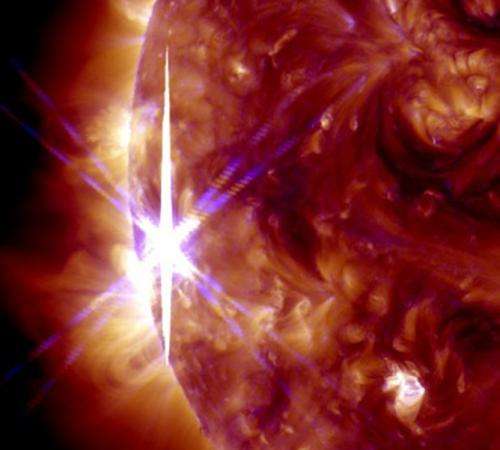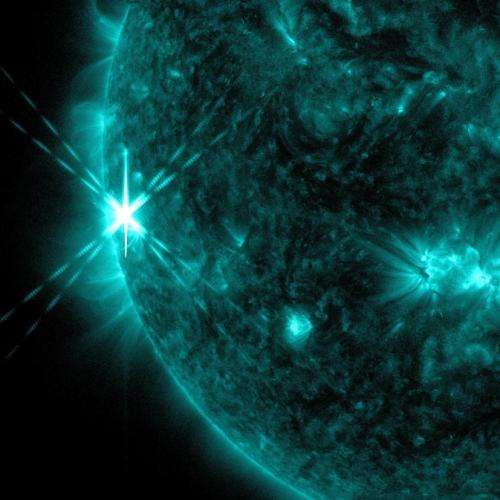Sun emits third solar flare in two days

UPDATE: Another solar flare erupted from the same area of the sun on Oct. 25, 2013,which peaked at 11:03 a.m. EDT. This flare is classified as an X2.1 class.
The sun emitted a significant solar flare, peaking at 4:01 a.m. EDT on Oct. 25, 2013. Solar flares are powerful bursts of radiation. Harmful radiation from a flare cannot pass through Earth's atmosphere to physically affect humans on the ground, however—when intense enough—they can disturb the atmosphere in the layer where GPS and communications signals travel. This disrupts the radio signals for as long as the flare is ongoing, anywhere from minutes to hours.
To see how this event may impact Earth, please visit NOAA's Space Weather Prediction Center at spaceweather.gov , the U.S. government's official source for space weather forecasts, alerts, watches and warnings.
This flare is classified as an X1.7 class flare. "X-class" denotes the most intense flares, while the number provides more information about its strength. An X2 is twice as intense as an X1, an X3 is three times as intense, etc. In the past, X-class flares of this intensity have caused degradation or blackouts of radio communications for about an hour.

Increased numbers of flares are quite common at the moment, since the sun's normal 11-year activity cycle is currently near solar maximum conditions. Humans have tracked this solar cycle continuously since it was discovered in 1843, and it is normal for there to be many flares a day during the sun's peak activity. The first X-class flare of the current solar cycle occurred in February 2011. The largest X-class flare in this cycle was an X6.9 on Aug. 9, 2011.
Provided by NASA





















